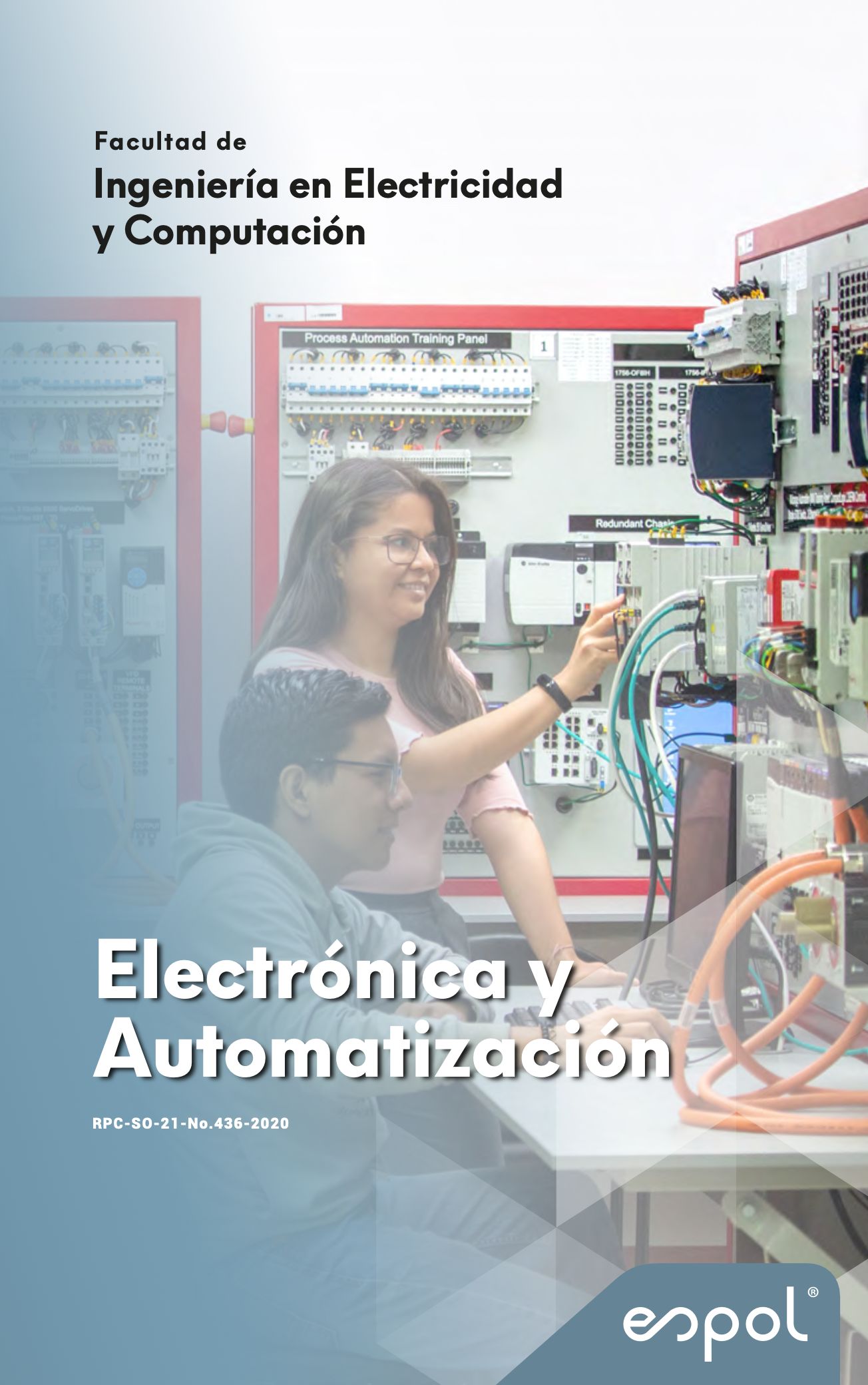
The Electronics and Automation program is designed in response to the growing industrial demand for professionals with deep knowledge in Applied Electronics, and Automation and Industrial Process Control. Our training combines a strong foundation in sciences and engineering with an advanced understanding of automated systems. With an emphasis on research and innovation, we prepare students to develop and implement cutting-edge technological solutions, turning them into leaders capable of driving technologies that contribute to our country's sustainable and equitable development.
Mission
To educate top-tier professionals and leaders with capabilities in research, innovation, and entrepreneurship in the domain of electronic and automated systems. Committed to strong ethical and moral values, we aspire for our graduates to be pivotal in the technological transformation and progress of our country.
Core Components of the Program
The Electronics and Automation degree program covers the following fields of knowledge or core areas:
- Electronic Systems:
- Analog and Digital Electronics
- Electrónica Industrial. Industrial Electronics
- Medical Electronics
- Intelligent Signal Acquisition and Processing
- Analog and Digital Electronics
- Automated Systems:
- Instrumentation and Automation of Industrial Processes
- Computer Vision
- Industrial Robotics and Service
- Classical and Advanced Control Systems
- Electrical, Hospital, and Home Automation Installations
International Accreditation
The Electronics and Automation program is accredited by the ABET Engineering Accreditation Commission.
The degree program in Electronics and Automation is certified with the EUR-ACE seal of the European Network for the Accreditation of Engineering Education.
* Undergraduate tuition/fees:
The Constitution of the Republic of Ecuador in its Article 356, among other principles, establishes that third-level public higher education will be tuition/fees free. Zero cost education is linked to the academic responsibility of the students.
Graphs show the figures in real time, at the time of the query
Individuals inclined towards analytical thinking, abstract reasoning, and logic. It's desirable for them to have a strong foundation in experimental sciences and mathematics, along with an aptitude for understanding and solving complex problems. A keen interest in technology, innovation, and a desire to contribute to the development and advancement of electronic and automated solutions in various sectors is valued.
Objectives
Within 3 to 5 years after graduation, graduates of the Electronics and Automation program shall be able to:
Objective 1. Have successfully addressed professional challenges in Electronics and Automation Engineering, applying extensive professional knowledge, innovation, and considering social, economic, and environmental aspects, always focusing on sustainable development.
Objective 2. Have demonstrated assertiveness in decision-making through effective communication skills, professional practice based on high-quality standards, and interdisciplinary interactions.
Objective 3. Have developed and implemented solutions in Electronics and Automation Engineering, either as an independent professional or as an employee, thereby responsibly contributing to society's productive sector.
Objective 4. Have acquired new technical and scientific knowledge during their professional activities or postgraduate studies.
Student Outcomes
The learning outcomes for the Electronics and Automation program are as follows:
SO 1. Ability to identify, formulate and solve complex problems of Electronics and Automation Engineering through the application of engineering, science, and mathematics principles.
SO 2. Ability to apply design of systems of Electronics and Automation Engineering, to produce solutions that satisfy specific needs, considering public health, safety, and well-being, as well as global, cultural, social, environmental, and economic factors.
SO 3a. Ability to communicate effectively in Spanish with diverse audiences orally and in writing.
SO 3b. Ability to communicate effectively in English with a variety of audiences.
SO 4. Ability to recognize ethical and professional responsibilities in situations of Electronics and Automation Engineering and make informed judgments, considering the impact of engineering solutions in the global, economic, environmental, and social context.
SO 5. Ability to function effectively in a team, whose members together provide leadership, create a collaborative and inclusive environment, set goals, plan tasks, and meet objectives.
SO 6. Ability to develop and conduct appropriate experimentation, analyze, and interpret data, and use criteria of Electronics and Automation Engineering to establish conclusions.
SO 7. Ability to acquire and apply new knowledge of Electronics and Automation Engineering as needed, using appropriate learning strategies.
SO 8. Design real solutions of Electronics and Automation Engineering that propose unique value in response to specific needs considered from the point of view of those involved.
Professional Profile
Electronic and Automation Engineers can work in:
Productive Sectors: oil, gas, mining, metallurgy, manufacturing, food, agro-industry, aquaculture, pharmaceutical, alternative energies, among others.
Consulting and implementation of projects in home automation, automation, robotics, process digitalization, and Industry 4.0.
Design and implementation of digital control systems for electrical machines, energy efficiency, renewable energy, and other current application fields.
Research within the field of Smart Industry, such as: digitalization, augmented reality, and applied intelligent systems.
Development of software applications aimed at electrical, electronic, and automation systems.
Design and implementation of industrial and hospital electrical and electronic installations.
Management of preventive, predictive, and corrective maintenance plans.
Development and Implementation of Technology-Based Startups.
Design, manufacturing, and maintenance of custom electronic boards and equipment
To earn a degree of Engineer in Electronics and Automation, students must meet the following criteria:
- Complete at least 52 credits in Professional Training areas. This is equivalent to 99.8 ECTS.
- Complete at least 20 credits in Humanities and Social and Economic Sciences, equivalent to 38.4 ECTS.
- Complete at least 30 credits in Mathematics and Basic Sciences, equivalent to 57.6 ECTS.
- Have obtained a minimum of 6 credits from itinerary courses. This is equivalent to 11.5 ECTS.
- Complete a minimum of 336 hours of professional internships, of which 96 hours correspond to community service internships and 240 hours to professional internships. This is equivalent to 7 credits or 13.4 ECTS.
- Pass the graduation process, which represents 8 credits or 15.4 ECTS.
The Capstone Project is a culminating requirement for graduation. These projects provide students with the experience of applying acquired knowledge and skills to the needs of society, with a focus on sustainability.
The IDEAR Fair showcases all Capstone projects, offering students a valuable opportunity to showcase their work and hone soft skills such as communication and teamwork. It is also a space for students to network with potential clients and future employers.
Explore all of the Capstone projects completed by the Electronics and Automation Engineering program.

